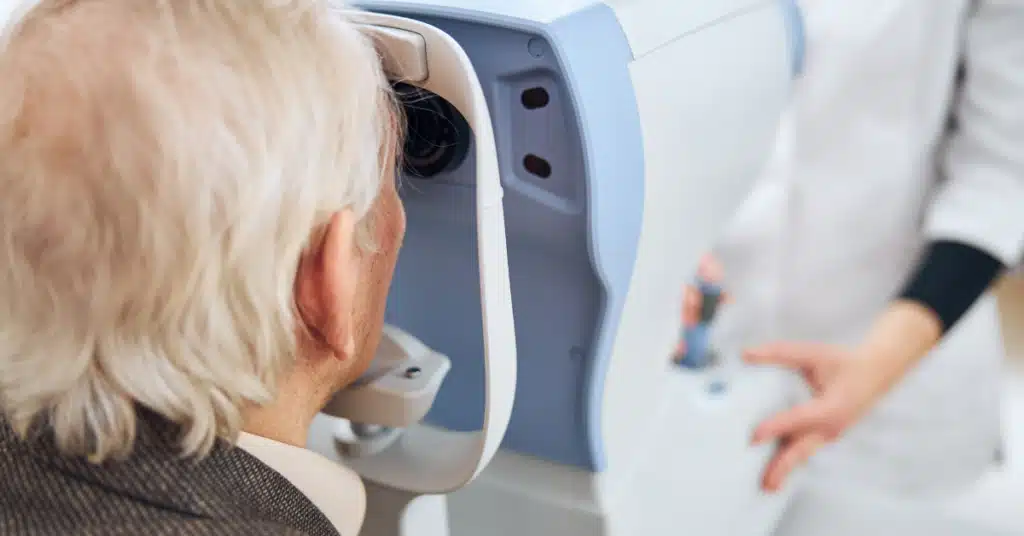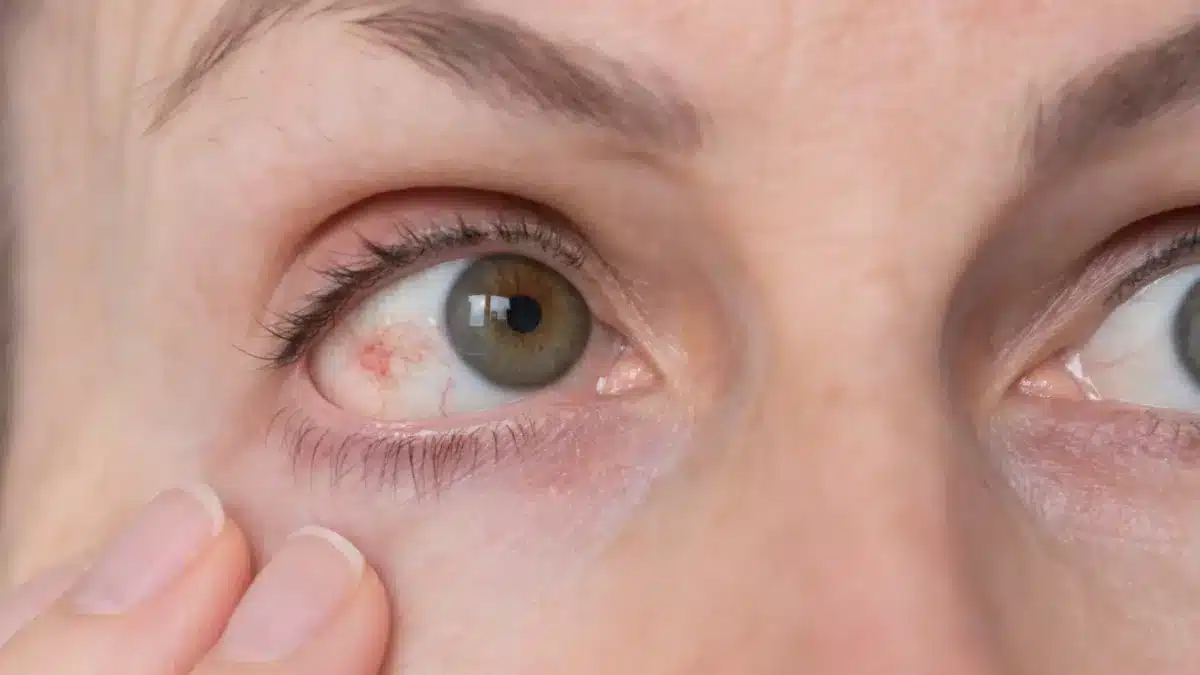Low Eye Pressure: Understanding its Symptoms, Causes, and Treatment Options
Intraocular Pressure, is the eye’s fluid pressure, which helps maintain the eye shape.
A normal eye pressure ranges between 10 mm Hg to 21 mm Hg.
But what does low eye pressure mean?
American Academy of Opthalmology states that an IOP under 8 mm Hg should be considered low eye pressure.
The medical terminology for low eye pressure is Hypotony, though usually used when the IOP becomes 5 mm Hg.
However, low eye pressure is uncommon; one can see fine with it until it falls below 6 mm Hg.
In this article, we will discuss what low eye pressure means, the symptoms of low eye pressure or Hypotony, its causes, symptoms, and treatment.
Symptoms of low eye pressure

You must first learn about the symptoms to know what low eye pressure feels like.
There are varying symptoms of Hypotony and low eye pressure; not everyone with the issue experience those.
The signs of low eye pressure can be different for each individual.
Some can develop blurry vision.
But blurred vision occurs when the eye pressure falls below 6 mm Hg.
Others can get affected with distorted vision.
In severe cases of Hypotony, an individual can get affected by vision loss.
Other prominent low eye pressure symptoms are:
Astigmatism, Descemet folds
Low eye pressure can lead to development of Astigmatism in the cornea, where the cornea changes shape and is not perfectly rounded.
It can also cause wrinkles called as Descemet folds in the Descemet membrane (a thin tissue layer lining the back of the cornea).
Edema
In cases of low eye pressure normal flow of eye fluids is disrupted, impairing the eye’s ability to maintain its shape and nourish its structures.
This can result in corneal swelling or Edema, potentially causing vision disturbances.
Choroidal detachments
Choroid (layer of blood vessels), located at the back of the eye, separates from sclera (white part of the eye) due to reduced eye pressure.
The occurs as a result of fluid or blood accumulation in the space between the two.
Cataract formation
Low eye pressure can also, cause Cataract formation on the cornea.
When proteins in the lens of the eye break down, they form cloudy patches, known as Cataracts.
What causes low eye pressure
Hypotony or low eye pressure can result from many factors.
Whenever a Glaucoma surgery is done, it often leads to low eye pressure.
When slits are made during the surgery, there might be leakage, leading to low eye pressure.
Apart from eye surgery, an eye injury can also cause Hypotony.
Other probable usual causes of low eye pressure are:
- Decrease in fluid production by the eyes caused by intraocular inflammation
- A retinal detachment, resolution out of proliferative vitreoretinopathy (PVR)
- Certain medications like antihypertensive drugs and antivirals
- Genetic conditions such as Marfan syndrome
- Increase in aqueous humor outflow
- Over filtering bleb
- Cyclodialysis cleft
Bleb: After a Glaucoma surgery, a tiny blister-like structure forms on the eye’s surface. This is called a bleb. When excess fluid drains out of the eye through this bleb, it is the over filtration which causes the eye pressure to drop too low
Cleft: A trauma or surgery causes a cyclodialysis cleft. The ciliary body of the eye separates from the scleral spur. This creates a direct connection between the eye’s frontal part and the space behind it. This connection is abnormal and enhances fluid drainage from the eye, causing chronic Hypotony
Measurement of low eye pressure

Ophthalmologists measure eye pressure using the test tonometry.
The most reliable type of tonometry is applanation tonometry.
During the procedure, the ophthalmologist applies eye drops and an orange dye to the eyes of the patient.
Then the patient has to rest their forehead and chin against the slit lamp.
This device lets the eye doctor see the inside of the eyes by releasing a strong light.
Then, the tonometer will be brought in front and close to the eyes until they are in contact.
This device will help put some pressure on the eyes.
Because of the eye drops, the eyes become numb to any pain when this happens.
Tonometry is a painless procedure, but in a few cases, it may leave a scratch on the eye’s outer surface, which heals automatically.
Tonometry can also be done contactless, where a puff of air flattens the cornea to measure Intraocular pressure.
Risks of low eye pressure or Hypotony
Low eye pressure can damage vision by causing retina, cornea, and lens distortions.
In case of Hypotony or low eye pressure, there is a risk of progressive choroid and retina detachment.
Hypotony can develop into Hypotony Maculopathy and cause retinal vessels, optic disk swelling, and folds in the retina and choroid.
Low eye pressure treatment
Treatment of low eye pressure should first target any underlying cause like surgery or injury.
There are various techniques to treat low pressure based on what is causing it.
An opthalmologist may prescribe Non-Steroidal Anti-Inflammatory Drugs (NSAIDs) or steroids to reduce inflammation.
For a fluid and blood leakage from a bleb, a doctor may suggest a special contact lens to stop the leak or give injections to heal.
They may also perform a stitch, or put viscoelastic substances in use for reshaping the eye’s front part.
Prevention
Surgeons can consciously only prevent Hypotony or low eye pressure when surgery is likely to cause it.
To diminish the risk of the onset of Hypotony, they can take post-operative measures such as administering injections and using Mitomycin.
Our comprehensive article, Eye Pressure: Understanding the Importance of Monitoring and Managing Ocular Health, gives you all the necessary details.
Conclusion
Low eye pressure can affect anyone, but it is not common.
Various factors can cause low eye pressure or Hypotony, such as eye surgery, disbalance in aqueous humor production, eye injury, etc.
Low eye pressure can be asymptomatic, too.
Still, some common signs are blurred or distorted vision, cataract formation on the cornea, etc.
If you experience discomfort or symptoms and think you have low eye pressure, consult an opthalmologist immediately.
They will determine your eye pressure, most likely through the tonometry test, and suggest appropriate treatment.
Frequently Asked Questions
Is low eye pressure bad?
There can be various effects of low eye pressure. It does not cause significant issues in some cases. But in certain cases, it can cause issues like discomfort and blurred vision. Get a proper assessment done by an eye doctor if you suspect you have low eye pressure.
What does low eye pressure indicate?
Low eye pressure indicates a disbalance in the production and drainage of aqueous humor (eye fluid). Hypotony or low eye pressure can be due to multiple reasons, such as trauma, surgery, or an underlying optical issue.
What happens when your eye pressure is low?
The severity of low eye pressure can differ from individual to individual. If your eye pressure is low, you may have blurred vision, reduced visual acuity, or even cataract formation on your cornea.
What is the treatment for low eye pressure?
The treatment for low eye pressure depends on the individual’s condition and underlying cause, such as retinal detachment. Your doctor may prescribe medications or surgeries (in severe cases) to manage your eye condition.
WowRx uses only high-quality sources while writing our articles. Please read our content information policy to know more about how we keep our content reliable and trustworthy.






